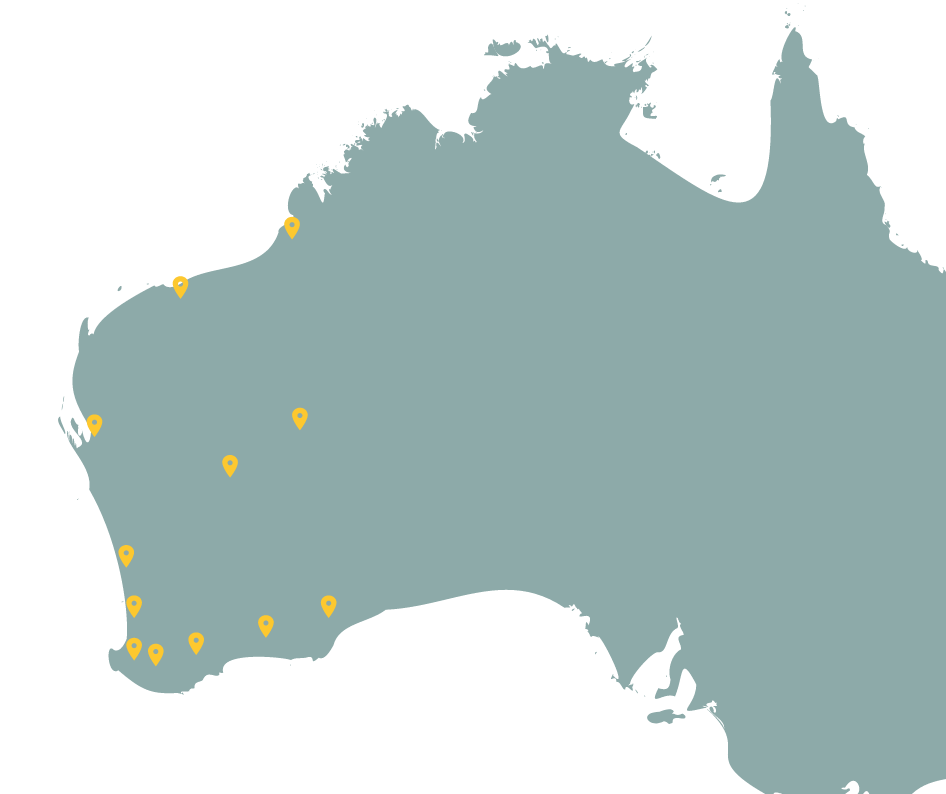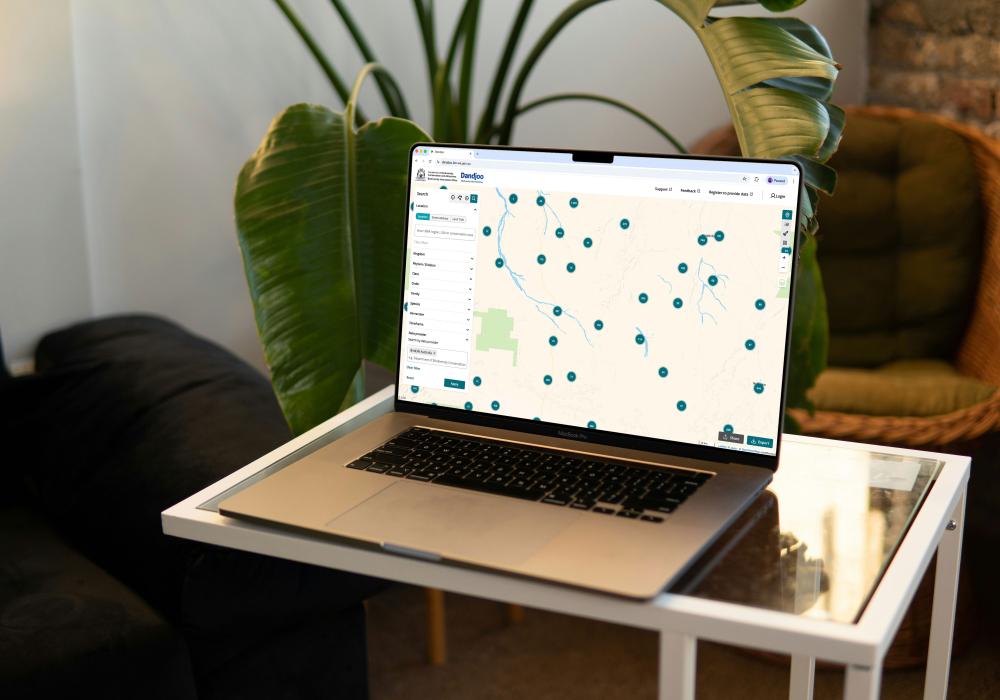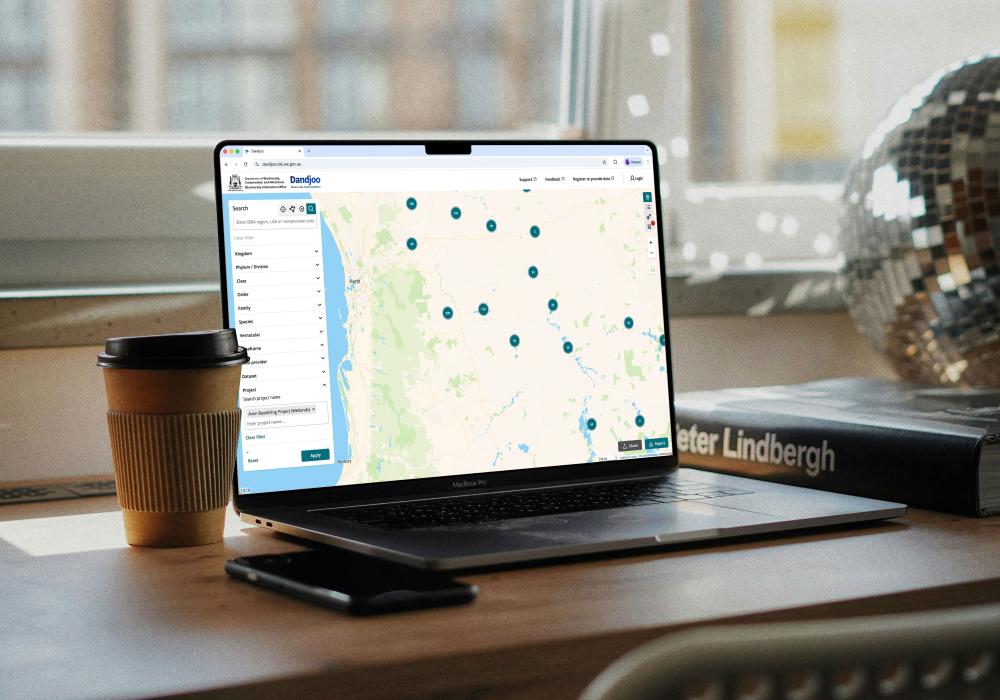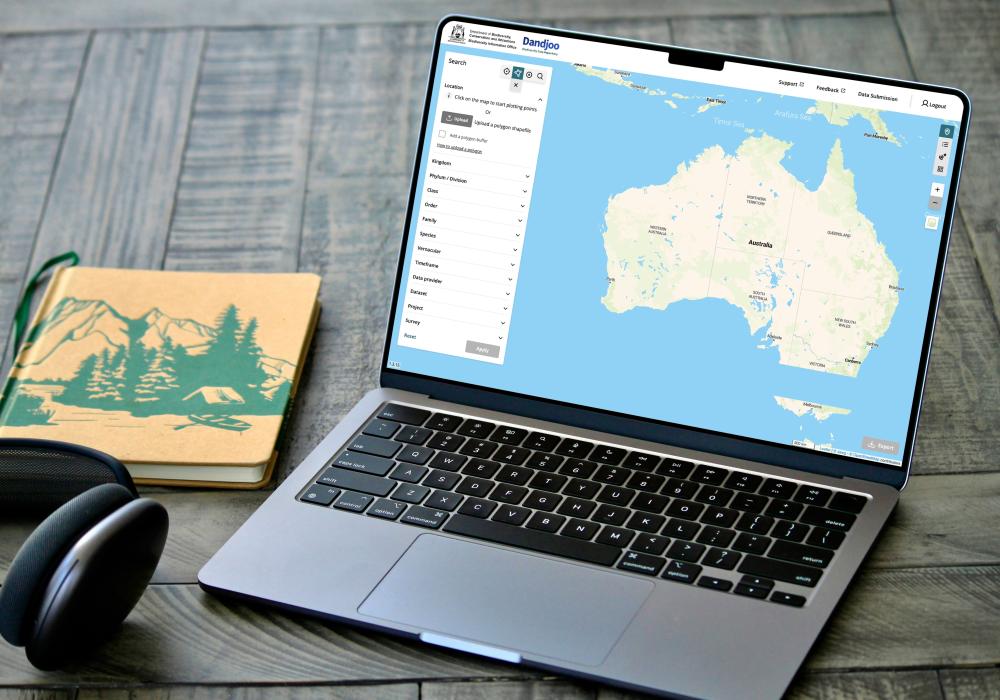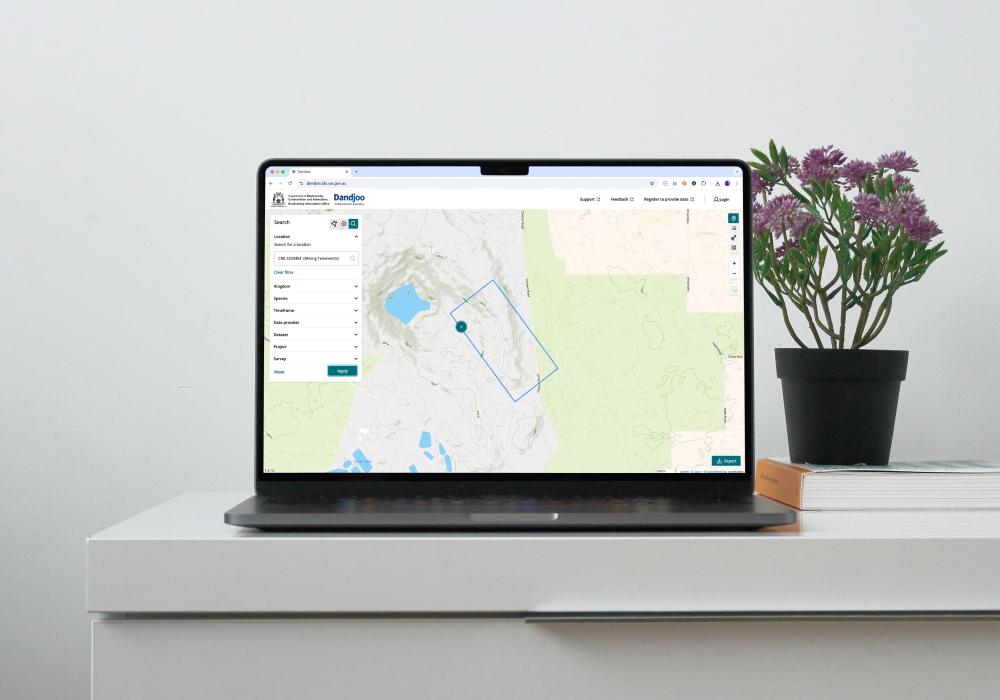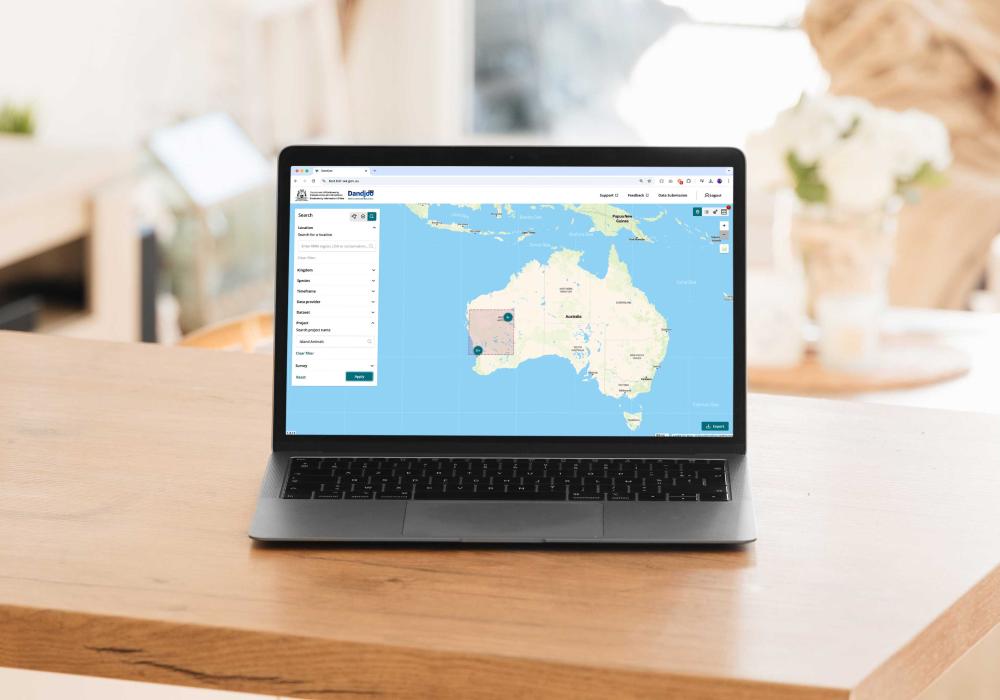How does Dandjoo work?
Dandjoo’s public components include an online data submission portal and a map-based interface for data users. The data submission portal provides self-service quality assurance tools and provides the flexibility for providers to upload their data without reformatting it to match a rigid template. The map-based interface allows users to search for data, view it in a table, and download it for further analysis.
The platform’s data curation module allows BIO’s curatorial staff to perform more extensive quality control checks, refer queries back to data providers, standardise data and location fields, and ensure that datasets are mapped to the appropriate data standard. This module also runs routine checks against current Western Australian taxonomic names and threatened species lists, appending this information to records already in the platform.
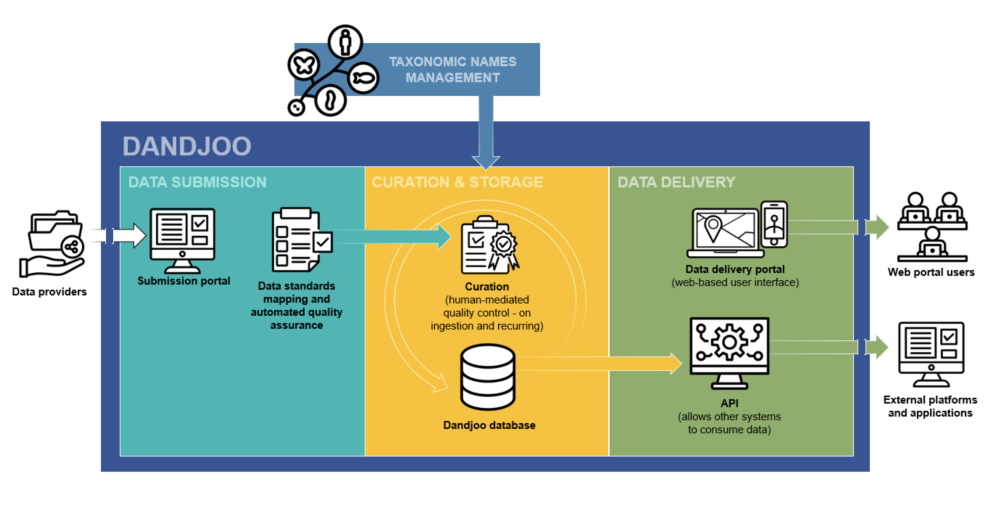
To find out more, check out our guides on Data standards, Data curation and Using Dandjoo.
You can also visit our Data Provider Toolkit if you’re interested in becoming a data provider, and see our API Documentation if you’re looking to connect to Dandjoo.
Guidelines, services and standards
BIO Blog
We have added functions to be able to search, view and download (where available) Systematic Survey Data in the Dandjoo platform.
To enhance value of data for users the following additional data attributes have been added to the data exports to better assist in data filtering.
Join the BIO newsletter and get updated first
Sign up for access to the latest developments at the Biodiversity Information Office, upcoming Dandjoo features, and our newest datasets.
